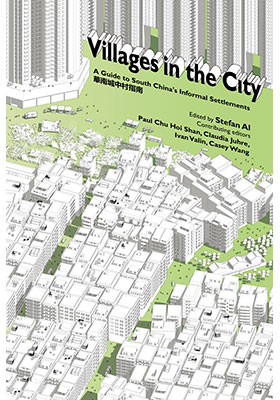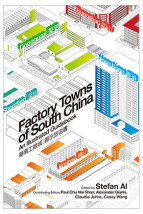Villages in the City
A Guide to South China’s Informal Settlements 華南城中村指南
ISBN : 978-988-8208-23-4
June 2014
216 pages, 6″ x 9″, 300 color illus.
For sale in Asia, Australia, and New Zealand only
- HK$210.00
Ebooks
Countless Chinese villages have been engulfed by modern cities. Gone are the picturesque farms and feng shui groves; in their place stand high-rises built so close together that they are known as “kissing buildings” or “handshake houses,” where occupants can reach out and shake hands with their neighbors. The towers create dark, claustrophobic alleys topped with strips of daylight (known as “thin line skies”) and jammed with dripping air-conditioners, hanging clothes, caged balconies and bundles of buzzing electric wires.
Although it is easy to see these villages as slums, a closer look reveals that they provide an important, affordable, and well-located entry point for migrants into the city. They also offer a vital mixed-use, spatially diverse and pedestrian alternative to the prevailing car-oriented modernist-planning paradigm in China. Yet, most of these villages are on the brink of destruction, affecting the lives of millions of people and threatening the eradication of a unique urban fabric.
Villages in the City argues for the value of urban villages as places. To reveal their qualities, a series of drawings and photographs uncovers the immense concentration of social life in their dense structures and provides a peek into residents’ homes and daily lives. Essays by a number of experts give a deeper understanding of the topic and show how focusing on the village can lead to a richer, more variegated pathway of urbanization.
“This book is an important and up-to-date record of China’s urban villages (chengzhongcun), which were formerly rural areas and have been engulfed by the country’s powerful trend of renewal. Because of their collective landownership, the villagers have managed to bypass planning and construction codes and rebuilt their villages into high-density neighborhoods that are housing millions of migrants in the cities. The spatial characteristics of these urban settlements have been understudied. This book will therefore be an invaluable addition to the existing research on China’s distinctive trajectory of urbanization.” —Lanchih Po, adjunct associate professor, University of California, Berkeley





